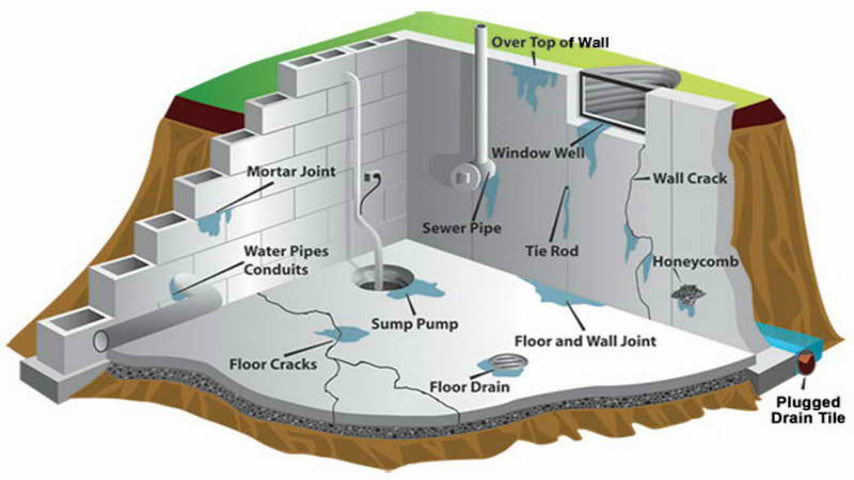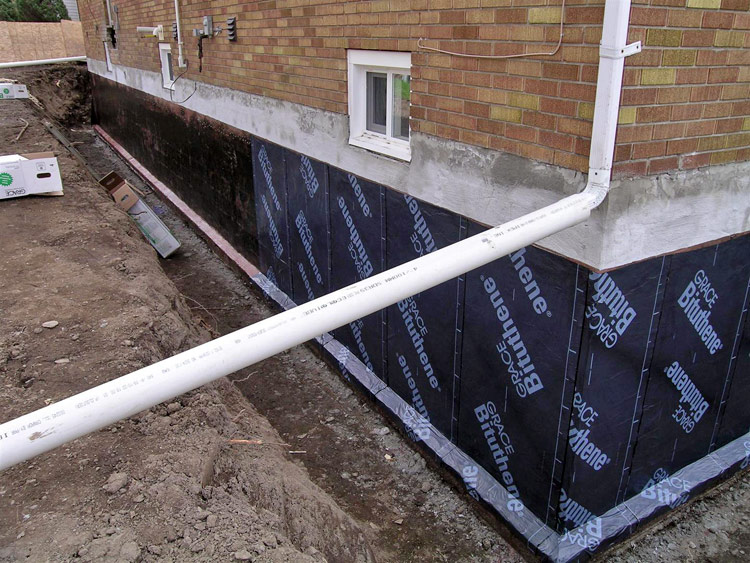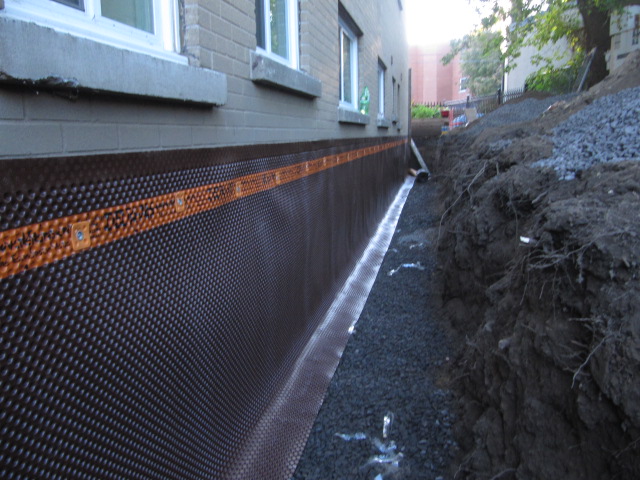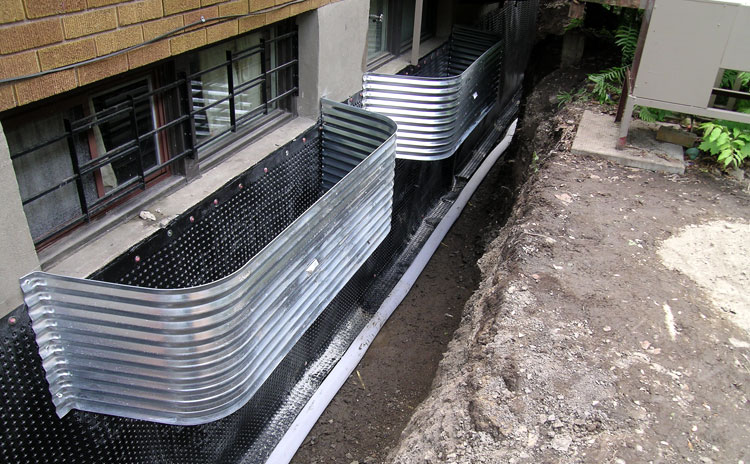Waterproofing
Water will always find the path of least resistance… sometimes this leads right into your basement. When this happens, it is important to address all aspects of the problem. If only one portion of the problem is attended to and other aspects ignored, water will find it’s way back. Tackling all of the issues, thoroughly, is the surest way of stopping water penetration problems permanently. Our proven work will keep water out of your basement for good.
Waterproofing the exterior of your home will provide you the best protection against water leaks and protect the foundation and the walls of your home from cracking,
Our waterproofing experts are ready to answer any questions you might have about the process and can inspect and assess your property to provide you with the best solution to protect it.
Here are few illustrations on how water can damage your basement and home foundation:
Exterior Waterproofing Process
1. Exterior waterproofing requires excavation around the perimeter of the building.
2. Installation of Speed Shoring.
3. Old Weeping Tiles are Removed.
4. Cleaning and Inspection of the Foundation Walls.
5. Application of Trowel-On Rubber Membrane.
6. Installation of mesh on top of membrane and final layer of rubber waterproofing.
7. Soil side drainage sheet is fastened to the top of termination bar.
8. Installing Window Wells.
9. A layer of 3/4 inch clear gravel is placed over the weeping tile.
10. Area is refilled with native soil and compacted to the original level.
F.A.Q.
What areas do you service?
How long does the waterproofing process take?
How can I tell where the water in my basement is coming from?
GET AN ESTIMATE
Roof Emegency ?
We are available 24/7 to respond to your roofing emergencies.





